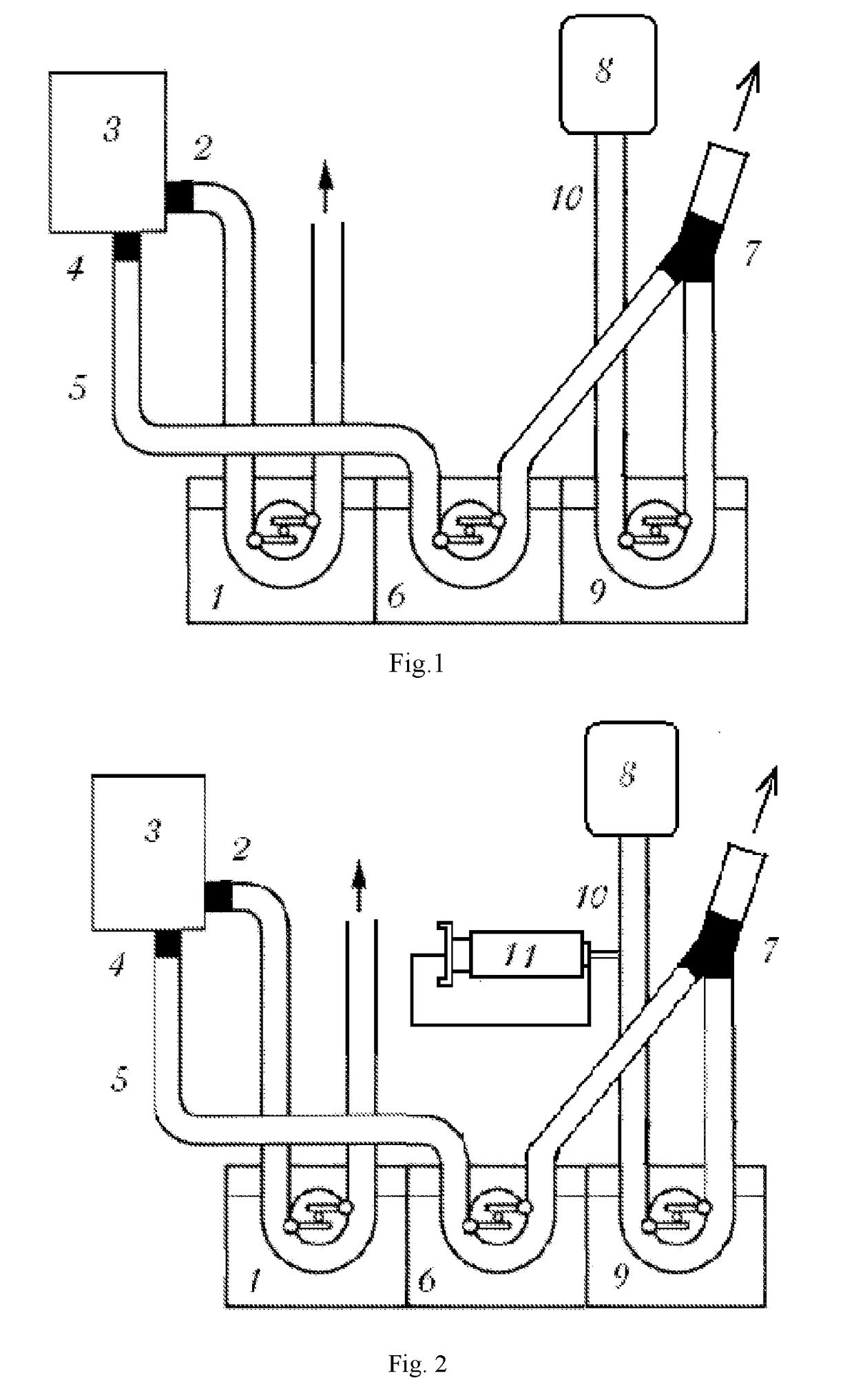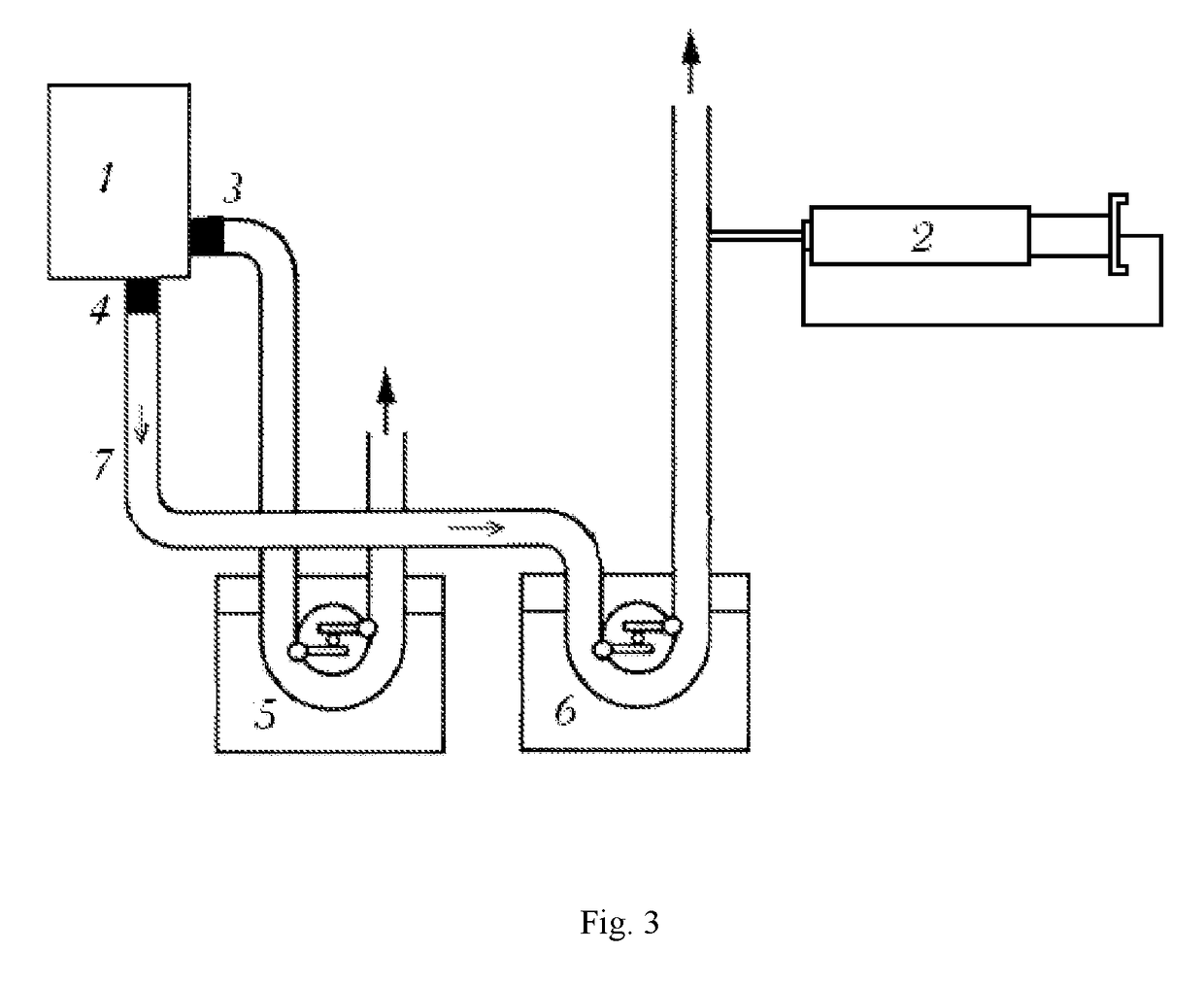Universal cardioplegic solution (variants)
a technology variable volume, applied in the field of universal cardioplegic solution, to achieve the effects of avoiding hyperkalemia, fast onset of asystole, and rigid control of the volume of solution
- Summary
- Abstract
- Description
- Claims
- Application Information
AI Technical Summary
Benefits of technology
Problems solved by technology
Method used
Image
Examples
example 2
[0114]GPCS delivery using a HLM roller pump, wherein potassium chloride content is changed during surgery using a syringe dispenser (FIG. 2). This scheme is more preferable in cardiovascular pathologies, when it is desirable to keep the rate of cardioplegic mixture perfusion at a constant level. Here, GPCS components are as follows:
[0115]Potassium chloride: 3.0 g;
[0116]Magnesium sulfate: 2.1 g;
[0117]Trometamol: 0.2 g;
[0118]Mannitol: 30.0 g;
[0119]Acetic acid: 1M to attain pH =7.1;
[0120]Distilled water: up to 1000 ml.
[0121]The syringe dispenser is filled with a 30% potassium chloride solution.
[0122]After the beginning of surgery and connection of the patient to a heart-lung machine, perfusion is performed with keeping the temperatures of the body and the heart within 25-37° C. (the optimum temperature is 36-37° C.). After puncturing the aorta with a cardioplegic cannula, the stock solution is continuously mixed with autoblood from the oxygenator at a ratio of 1:5. GPCS is infused into...
example 3
[0123]GPCS infusion using a syringe dispenser (FIG. 3). This scheme is more preferable in pediatric surgery and hemodynamically significant pathologies of myocardial vasculature or when hemodilution is undesirable. Here, GPCS components are as follows:
[0124]Potassium chloride: 15.0 g;
[0125]Magnesium sulfate: 2.5 g;
[0126]Trometamol: 1.0 g;
[0127]Mannitol: 40.0 g;
[0128]Citric acid: 1M to attain pH =8.9;
[0129]Distilled water: up to 1000 ml.
[0130]After the beginning of surgery and connection of the patient to a heart-lung machine, GPCS perfusion is performed with keeping the temperatures of the body and the heart within 25-37° C. (the optimum temperature is 36-37° C.). After puncturing the aorta with a cardioplegic cannula, GPCS fed by an electronic syringe dispenser and oxygenated autoblood fed by an HLM roller pump are mixed in a ratio of 1:4. To perform cardiac arrest, GPCS is infused into the aortic root or directly into the coronary ostia, while infusion pressure in the aortic root ...
PUM
| Property | Measurement | Unit |
|---|---|---|
| temperature | aaaaa | aaaaa |
| concentration | aaaaa | aaaaa |
| concentration | aaaaa | aaaaa |
Abstract
Description
Claims
Application Information
 Login to View More
Login to View More - R&D
- Intellectual Property
- Life Sciences
- Materials
- Tech Scout
- Unparalleled Data Quality
- Higher Quality Content
- 60% Fewer Hallucinations
Browse by: Latest US Patents, China's latest patents, Technical Efficacy Thesaurus, Application Domain, Technology Topic, Popular Technical Reports.
© 2025 PatSnap. All rights reserved.Legal|Privacy policy|Modern Slavery Act Transparency Statement|Sitemap|About US| Contact US: help@patsnap.com


